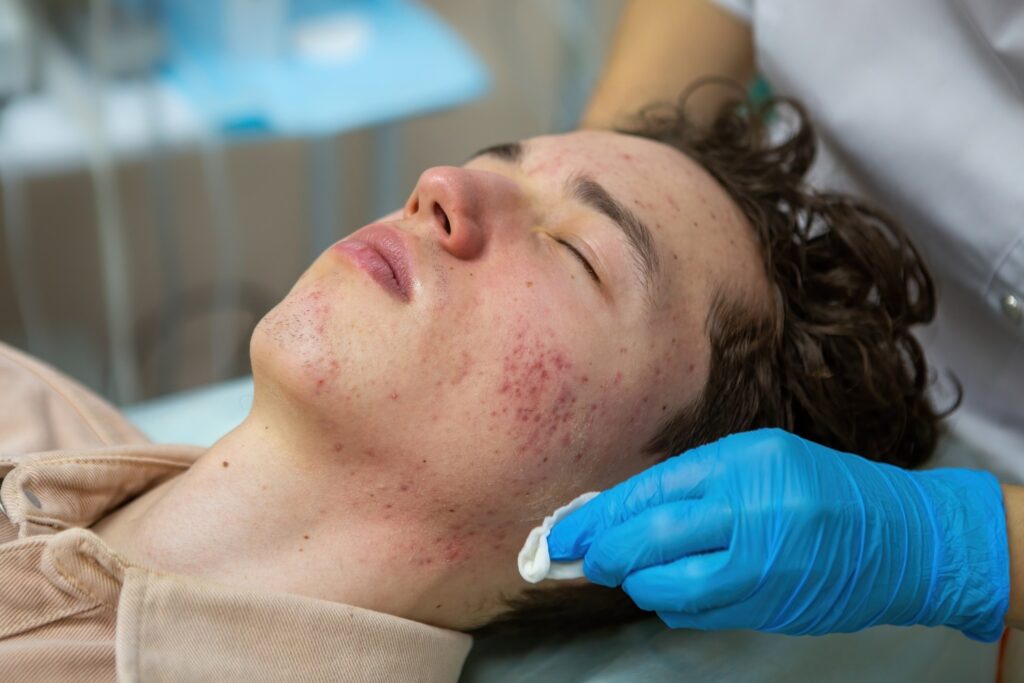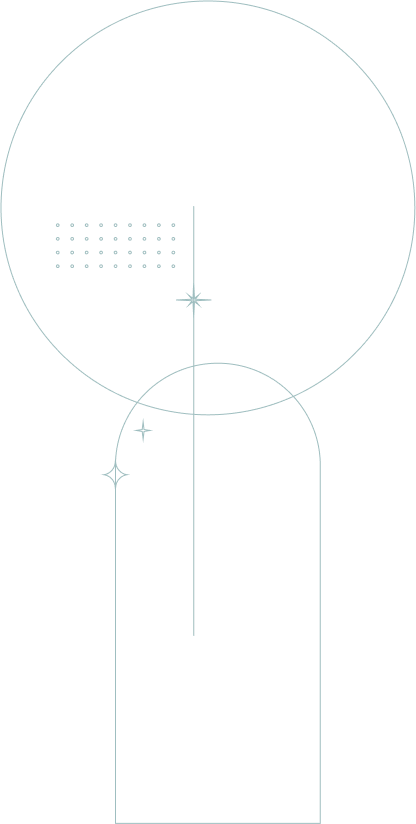
Do you regularly suffer from redness, bumps, and sensitive skin? Do these symptoms happen after eating or drinking something, after exposure to extreme temperatures, or when you’re stressed? Your rosacea might have been triggered.
It could be rosacea, a chronic skin condition characterised by reddish skin with visible bumps that resemble pimples. Rosacea can affect your face, particularly the cheeks, chin, eyes, and nose. The skin along these areas becomes sensitive, which affects confidence and day-to-day comfort.
The main cause of rosacea is unknown. However, several factors, or “triggers,” may cause symptoms, such as certain foods, stress, and prolonged hot showers. Sydney’s hot and humid climate, especially during the summer months, can also be a major trigger for rosacea attacks.
Need help with red, bumpy, and itchy skin? Dr Ritu and her specialist clinical staff are here to help you understand your symptoms and provide holistic treatments to manage rosacea triggers.
10 Most Common Triggers of Rosacea
1. Sun Exposure
Sydney’s sunny climate can be a significant trigger for individuals with rosacea. Harmful UV rays can damage skin cells, which leads to inflammation and the release of immune cells into the dermis. This causes redness and flushing, which are common in rosacea skin.
Also, exposure to UV radiation weakens the skin, disrupting the production of elastin and collagen. All these lead to more frequent flare-ups.
2. Hot Weather or Sudden Temperature Changes
Rosacea can flare up in response to hot weather or sudden temperature changes. Exposure to heat dilates the blood vessels, which leads to flushing and redness, hallmark symptoms of rosacea. Sudden temperature changes or fluctuations also shock the skin, which results in the same reaction.
3. Spicy Foods
Spicy foods contain natural compounds, such as capsaicin, a natural chemical that dilates blood vessels, increasing blood flow to the skin’s surface. This effect is very noticeable in people with rosacea, as they are more prone to redness and flushing. Other compounds, such as cinnamaldehyde, are present in spicy foods, which also cause flare-ups.
4. Alcohol (Especially Red Wine)
Alcohol, particularly red wine, is a common trigger. Alcohol can dilate blood vessels, which increases redness and flushing. Drinking alcohol moderately may come with health effects, but it can worsen existing rosacea symptoms.
5. Stress and Anxiety
The body’s chemical reaction to stress and anxiety causes flare-ups. During stress, the body releases adrenaline and cortisol, two hormones that can disrupt endocrine system balance. When this balance is disrupted, symptoms of rosacea, such as redness and inflammation, can become worse. Additionally, stress stimulates the sympathetic nervous system, which increases blood flow to the face, leading to increased blood flow and redness.
6. Fragranced or Harsh Skincare Products
Skincare products and cosmetics with excessive fragrance or containing harsh chemicals can irritate the skin. This can worsen existing inflammation. Moreover, ingredients commonly found in skin care products, such as essential oils and alcohol, may exacerbate rosacea symptoms.
7. Hot Drinks (Coffee, Tea)
Caffeine in coffee and tea has been studied for its potential link to rosacea, but current research suggests that the temperature of the beverage, rather than the caffeine itself, may trigger flare-ups. Heat dilates blood vessels, leading to flushing and redness.
8. Exercise or Excessive Sweating
Strenuous activities and exercise increase body temperature, leading to sweating and may trigger rosacea symptoms. Also, exercise stimulates the sympathetic nervous system, the area of the brain that regulates blood flow and sweating. When this happens, flare-ups happen and existing symptoms worsen.
9. Certain Medications
Topical corticosteroids and vasodilators can trigger rosacea. Usage and withdrawal of potent steroids may lead to “steroid-induced” rosacea. Individuals with hypertension, chest pain, and heart failure taking vasodilators experience an increased blood flow to the face, contributing to redness and flushing.
10. Cold Winds or Low Temperatures
While hot climates can trigger flare-ups, cold winds and low temperatures can also exacerbate rosacea symptoms. Cold air is dry, which can irritate the skin, making it more susceptible to inflammation. Cold winds also irritate the skin, eventually leading to redness, burning and irritation.
What triggers one individual may not be the same for others. It’s essential to consult a dermatologist for assessment, diagnosis and to create a personalised plan tailored to managing your rosacea symptoms.
How a Dermatologist Can Help You Manage Rosacea Triggers
Visiting a dermatologist can help you effectively control your rosacea triggers and improve your daily life.
Diagnostic Tools
Dermatologists use a combination of traditional and updated technologies to diagnose rosacea. They perform thorough clinical exams and assessments to understand your symptoms better and use computer-aided diagnostic tools to create personalised, holistic treatments to improve your condition.
Tailored Treatments
Dermatologists use trigger mapping, a diagnostic tool to pinpoint triggers and your responses to each one. They help you understand various factors that contribute to your flare-ups and develop treatment plans accordingly.
Learn Your Options
Dermatologists will also help you understand various treatment options to manage your symptoms, including the following:
- Topicals – including prescription medications (minomycin, ivermectin and occasionally metronidazole, and brimonidine, ivermectin, etc.) and over-the-counter options to reduce inflammation.
- Laser Therapy – reduces visible blood vessels and redness, significantly improving rosacea symptoms.
- Changes in Your Daily Routines – focusing on gentle skincare, sun protection, and stress management.
Why Choose Dr Refresh for Rosacea Treatment in Sydney?
Are you struggling with redness, flushing, or bumpy skin? Dr Ritu and her clinical staff are experienced specialists in providing the highest standard of treatments for rosacea.
- Our treatments are evidence-based and grounded in the latest dermatological science, ensuring proven results.
- We understand how Australian lifestyles and climates affect rosacea skin.
- No two patients are the same. Your rosacea treatment plan is specifically tailored to your needs and lifestyle.
Our patients report significant reduction in redness and inflammation, improved texture, and better confidence, thanks to our personalised treatment plans.
Don’t let your rosacea control your life! Take this first step for clearer, calmer, and improved skin.
Book a Rosacea Consultation With Dr Refresh Today
You deserve to be free from redness, irritation, and inflammation, to live a comfortable life and to feel confident in your skin. But, for these to happen, you need to manage your rosacea symptoms, starting with understanding your triggers.
Schedule a consultation with Dr Ritu or her specialist clinical staff to discover how we can help. Call the Dr Refresh team at (02) 8014 6500 to book a consultation. Alternatively, you can also enquire and book online.

